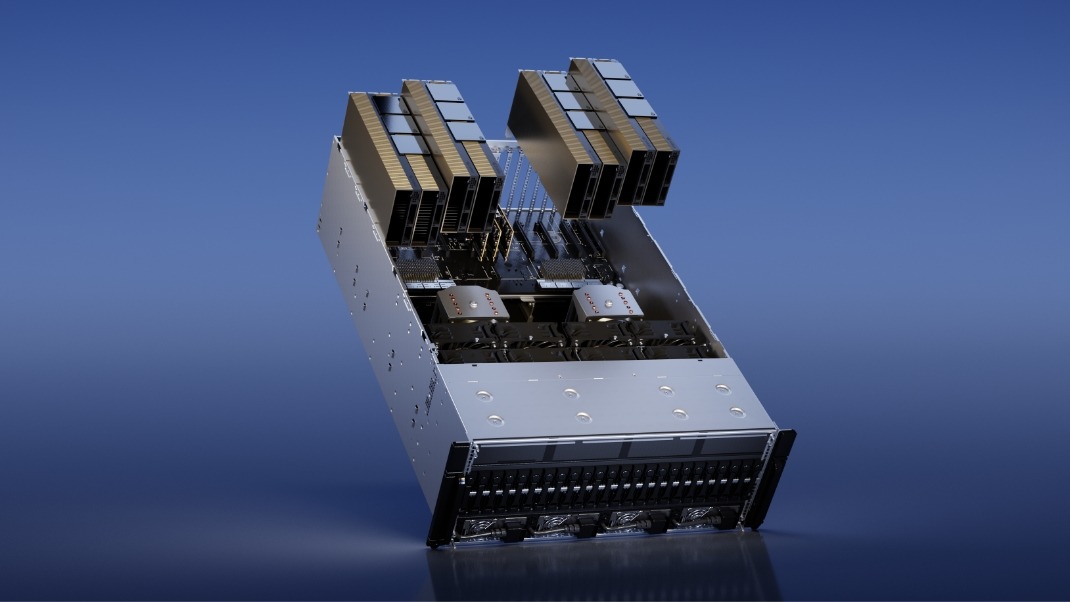NVIDIA’s Pioneering Role in AI Development: A Technological Odyssey
In the realm of artificial intelligence (AI), NVIDIA has emerged as a trailblazer, playing a pivotal role in shaping the landscape of AI development. The company, traditionally recognized for its cutting-edge graphics processing units (GPUs), has evolved into a powerhouse driving innovation in the AI sphere. Here’s a closer look at NVIDIA’s importance in AI development.
The GPU Revolution:
NVIDIA’s journey into AI began with the realization that graphics processing units, originally designed for rendering images and videos, possessed a parallel processing capability well-suited for certain AI tasks. This realization led to the birth of CUDA (Compute Unified Device Architecture), a parallel computing platform and application programming interface model. CUDA enabled developers to harness the computational power of NVIDIA GPUs for general-purpose processing, laying the foundation for accelerated AI computing.
NVIDIA Accelerating Deep Learning:
As deep learning gained prominence, NVIDIA GPUs proved instrumental in accelerating the training of neural networks. Deep learning, a subset of machine learning, involves training complex neural networks on vast datasets. NVIDIA’s GPUs, with their parallel processing architecture, significantly expedited these computationally intensive tasks. The introduction of CUDA-enabled GPUs like the Tesla series marked a turning point, making deep learning more accessible and efficient.
NVIDIA CUDA and CuDNN Frameworks:
NVIDIA’s commitment to democratizing AI development is evident in its development of CUDA and the cuDNN (CUDA Deep Neural Network) library. These frameworks provide developers with the tools needed to build and optimize AI applications efficiently. CUDA, in particular, has become a standard for GPU-accelerated computing, fostering a community of developers creating diverse AI solutions.
AI Hardware Innovations:
NVIDIA’s dedication to advancing AI hardware extends beyond GPUs. The company introduced specialized hardware, such as the Tensor Core, designed explicitly for matrix-multiplication tasks inherent in deep learning. The Tensor Core, featured in GPUs like the NVIDIA A100, delivers unprecedented performance for AI workloads, contributing to breakthroughs in natural language processing, image recognition, and more.
Industry Adoption and Partnerships:
NVIDIA’s influence in AI extends to collaborations and partnerships with leading technology companies, research institutions, and enterprises. Platforms like NVIDIA’s DGX systems provide integrated solutions for AI development and deployment, further solidifying the company’s role in shaping the AI ecosystem.
Looking Ahead:
With AI becoming increasingly pervasive across industries, NVIDIA continues to innovate. The company’s commitment to AI development is reflected in its advancements in hardware architecture, software frameworks, and collaborative efforts with the global AI community. As AI applications diversify, from autonomous vehicles to healthcare solutions, NVIDIA remains at the forefront, driving the next wave of technological evolution.
In conclusion, NVIDIA’s importance in AI development is foundational, reshaping the capabilities and possibilities of artificial intelligence. As the AI landscape continues to evolve, NVIDIA’s contributions are destined to play a crucial role in shaping the future of intelligent computing.
H100
As technology continues to push the boundaries of innovation, NVIDIA, a pioneer in the realm of graphics processing units (GPUs), is making waves with its groundbreaking H100 chip. Unveiled as a part of NVIDIA’s data center GPU portfolio, the H100 is poised to redefine high-performance computing (HPC) and artificial intelligence (AI) workloads.
At the heart of the H100’s capabilities is its utilization of NVIDIA’s innovative Hopper architecture. This architecture is meticulously designed to deliver unprecedented computational power, incorporating a myriad of Tensor Cores and CUDA cores. The H100’s Tensor Cores, in particular, are tailored for AI workloads, enabling accelerated performance in deep learning and neural network processing.

One of the standout features of the H100 is its versatility. Whether tackling complex simulations, data analytics, or AI-driven applications, the chip exhibits remarkable adaptability. This flexibility positions the H100 as a formidable force in various industries, from scientific research and healthcare to finance and beyond.
Moreover, the H100 is designed with scalability in mind. Its integration with NVIDIA’s NVLink technology allows for seamless multi-GPU configurations, fostering an environment where computational power can be scaled according to the demands of diverse workloads.
The significance of the H100 extends beyond raw processing power. NVIDIA has embedded advanced technologies like Multi-Instance GPU (MIG) and NVIDIA NVLink to enhance efficiency and resource utilization. MIG, in particular, enables the partitioning of the GPU into multiple instances, allowing different workloads to run concurrently on a single device.
As industries increasingly embrace AI, machine learning, and data-intensive applications, NVIDIA’s H100 chip emerges as a pivotal tool for organizations seeking to push the boundaries of computational performance. With its cutting-edge architecture, scalability, and versatility, the H100 is poised to play a transformative role in shaping the future of high-performance computing.
NVIDIA: Navigating Uncharted Waters Amidst U.S. Chip Sanctions
In the ever-evolving landscape of semiconductor technology, the imposition of U.S. sanctions on chip manufacturers has sent ripples through the industry. However, one notable player, NVIDIA, has displayed remarkable resilience, with its sales appearing to weather the storm despite the challenging circumstances.
Understanding the Chip Sanctions:
The United States, in an effort to address national security concerns and bolster its semiconductor industry, implemented sanctions that impacted certain foreign chip manufacturers. These measures aimed to curtail the export of certain semiconductor technologies and equipment, potentially disrupting global supply chains.
NVIDIA’s Unique Position:
NVIDIA, renowned for its prowess in graphics processing units (GPUs) and AI technologies, operates in a distinctive space within the semiconductor landscape. While the sanctions primarily targeted specific chip manufacturing technologies, NVIDIA’s core business revolves around GPUs, which are not subject to the same restrictions.
NVIDIA GPU Dominance in Key Markets:
NVIDIA’s dominance in the gaming, AI, and data center markets has contributed to its resilience in the face of chip sanctions. The demand for high-performance GPUs in these sectors remains robust, and NVIDIA’s ability to provide cutting-edge solutions has allowed the company to maintain its market position.
Strategic Diversification:
One key factor in NVIDIA’s ability to navigate the sanctions unscathed is its strategic diversification. The company’s focus extends beyond traditional chip manufacturing, encompassing GPU architectures tailored for gaming, deep learning, and scientific computing. This diversified approach shields NVIDIA from the direct impact of the sanctions on specific chip technologies.
Ongoing Innovation:
NVIDIA’s commitment to ongoing innovation plays a crucial role in its continued success. The company’s dedication to developing state-of-the-art GPU technologies and exploring new frontiers, such as AI hardware and autonomous systems, ensures that it remains at the forefront of technological advancements.
Global Collaborations:
NVIDIA’s global collaborations and partnerships have further insulated it from the direct repercussions of the chip sanctions. The company’s involvement in international projects, research initiatives, and collaborations with industry leaders contributes to a resilient ecosystem that transcends geopolitical challenges.
Market Confidence and Financial Performance:
Despite the uncertainty introduced by chip sanctions, market confidence in NVIDIA remains robust. The company’s financial performance reflects this sentiment, with consistent revenue growth and strong market capitalization. Investors and industry stakeholders appear optimistic about NVIDIA’s ability to navigate geopolitical challenges.
The Road Ahead:
As geopolitical dynamics continue to influence the semiconductor landscape, NVIDIA’s proactive approach to challenges positions it as a stalwart player. The company’s emphasis on innovation, strategic diversification, and global collaborations has proven effective in maintaining its market standing amidst broader industry disruptions.
While U.S. chip sanctions have created headwinds in the semiconductor sector, NVIDIA’s unique positioning, strategic resilience, and unwavering commitment to innovation have allowed it to navigate these challenges successfully. As the industry adapts to a changing geopolitical landscape, NVIDIA remains a beacon of stability and innovation.
NVIDIA: Pioneering Graphics Innovation – A Journey Through History
Introduction: NVIDIA, a trailblazer in the world of graphics processing and artificial intelligence, has a storied history marked by innovation, resilience, and transformative contributions to the technology landscape. From its humble beginnings to its current position as a global technology powerhouse, NVIDIA’s journey is a testament to the vision and determination of its founders and the impact of their groundbreaking work.
Founding Years:
NVIDIA Corporation was founded in April 1993 by Jensen Huang, Chris Malachowsky, and Curtis Priem. The trio shared a common vision of revolutionizing computer graphics by creating powerful and efficient graphics processing units (GPUs). In 1995, NVIDIA introduced its first product, the NV1, an ambitious attempt at a 3D graphics accelerator. Although not a commercial success, it laid the foundation for future innovations.
The GeForce Era:
NVIDIA’s breakthrough came in 1999 with the launch of the GeForce 256, the world’s first GPU. This marked the beginning of the company’s dominance in the gaming graphics market. The subsequent GeForce iterations, including the GeForce 2, GeForce 3, and beyond, solidified NVIDIA’s reputation for delivering cutting-edge graphics technologies, setting new standards for visual computing.
CUDA Architecture and Parallel Processing:
In 2006, NVIDIA introduced CUDA (Compute Unified Device Architecture), a parallel computing architecture that leverages GPU power for general-purpose computing. This move expanded NVIDIA’s influence beyond gaming, opening doors to scientific research, data analysis, and artificial intelligence.
Deep Learning and AI Revolution:
The 2010s saw NVIDIA’s GPUs becoming instrumental in the rise of deep learning and artificial intelligence. The company’s Tesla GPUs, designed for high-performance computing, became the preferred choice for training complex neural networks. The introduction of the NVIDIA Deep Learning AI platform and the Tesla V100 GPU accelerated AI research and applications globally.
Autonomous Vehicles and Edge Computing:
NVIDIA expanded its horizons by entering the field of autonomous vehicles with the introduction of the NVIDIA DRIVE platform. This platform combines AI, deep learning, and high-performance computing to power self-driving cars. Additionally, NVIDIA’s Jetson series brought AI capabilities to edge devices, fostering innovation in robotics, healthcare, and more.
Ray Tracing and Real-Time Graphics:
In 2018, NVIDIA introduced the GeForce RTX series, featuring real-time ray tracing capabilities. This groundbreaking technology brought cinematic-quality graphics to gaming, setting a new standard for visual realism in virtual environments.
Mergers and Acquisitions:
Over the years, NVIDIA strategically acquired companies like Ageia, Mental Images, and Mellanox Technologies, enhancing its capabilities in physics simulation, 3D rendering, and high-performance computing.
Current Landscape:
As of today, NVIDIA continues to shape the future of computing. The company’s GPUs are at the heart of gaming, AI, data centers, and professional graphics. With ongoing developments in AI, edge computing, and collaborations with industry leaders, NVIDIA remains at the forefront of technological innovation.
NVIDIA’s journey from a graphics startup to a global technology leader is a testament to its commitment to pushing the boundaries of what is possible. The company’s legacy of innovation, from revolutionizing gaming graphics to driving advancements in AI, solidifies its place as a cornerstone in the ever-evolving world of technology. As NVIDIA continues to shape the future, its impact on computing and graphics will undoubtedly be felt for years to come.
Shayne Heffernan









